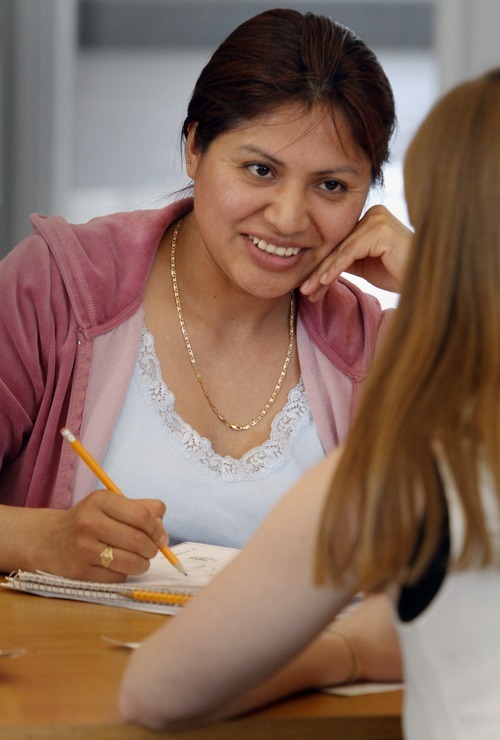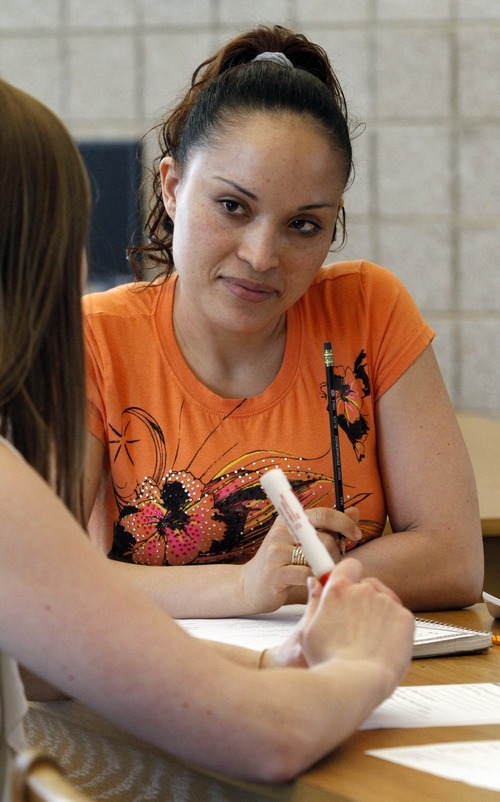This is an archived article that was published on sltrib.com in 2011, and information in the article may be outdated. It is provided only for personal research purposes and may not be reprinted.
The United Way of Salt Lake has reshaped itself so it can transform the communities in which it works.
Instead of raising money and doling it out to various organizations with isolated results — as it has done since 1904 — United Way wants to drive long-term investments in some of Utah's neediest neighborhoods.
"We're changing the odds for the entire neighborhood," said Tom Love, the group's board chairman. "We are at the precipice of doing really phenomenal work."
On Thursday, the board unanimously approved the shift to what it calls "community impact" work. The vote was followed by a standing ovation.
United Way has cut the number of programs it funds, even in a financial drought, to boost funding for certain neighborhoods in Clearfield, Kearns, West Valley City, Salt Lake City, South Salt Lake and Park City.
Partners in those areas will receive $3.3 million to create centers that will focus on improving health, education, income and the integration of immigrants and refugees.
Bill Crim, United Way's vice president of community impact, said the job is urgent. While Utah typically ranks high in terms of economic stability and health, there are neighborhoods where the poverty rates, educational achievement and health conditions are "shocking," he said.
"It is so far off the charts, in terms of what we expect and what we think and what we see most of the time, that when you're face-to-face with those kids, you go, 'Wow, we have to fix this.' "
"I think it's terrific," said Cathy Caputo-Hoskins, executive director of the Salt Lake Community Action Program (CAP), which will receive $100,000 under the new model. "It will have a more lasting effect on our community than more piecemeal distribution of funds."
CAP will use the money to improve the lives of residents of five mobile-home parks along 1300 West, between 3300 South and 3900 South, in West Valley City. It wants to teach parents how to make sure their children are on track, developmentally and educationally.
The center, which will be located in a donated mobile home, will also help adults boost their job skills, assist families in saving money, and provide mental-health and nutrition services and English-language classes.
"It's going to give them an opportunity to expand the opportunities they have in their life," said Caputo-Hoskins, who noted that the residents helped apply for the United Way funding.
Similar services will be offered in new centers to families living around the boundaries of Salt Lake City's Glendale Middle School and Washington and Lincoln Elementary schools; Park City's Parley's Park Elementary School; and Kearns' Oquirrh Hills Elementary School.
New centers will also be included at the Villa Franche Apartments and Police Athletic Activities League Pete Suazo Boxing Center in South Salt Lake; and the Lied Boys & Girls Clubs in Salt Lake City.
United Way has been helping fund 10 community centers for the past four years on a pilot basis, and funding for most of those centers will continue. United Way says some centers have shown more parental involvement in school, more children entering kindergarten on grade level and a reduction in juvenile crime.
Parents "really feel like they have a sense of belonging here," said Keri Taddie, coordinator of the community center at Mountain View Elementary School in Salt Lake City. United Way funding will help expand that program, which offers after-school, early childhood, parent-education and health classes to neighboring Glendale Middle School. "We really work together to meet the needs of the community."
United Way also set aside $2 million for basic-needs grants to agencies such as food banks, homeless shelters and counseling services. It hopes the need for those services will decrease as neighborhoods transform, Crim said.
United Way President Deborah Bayle said the organization had to update its business model. When it started, most adults worked at manufacturing plants and donated to United Way through payroll deductions. There were few other ways to donate to charities.
That's not the case today, and the number of donors has dropped from 45,000 in 1992 to 33,000. The $11 million United Way expects to raise by the end of June is down 20 percent from 2008.
Plus, problems in the Salt Lake area have become more complex, and United Way wanted to stay relevant.
The organization believes it will be able to raise more money when it can show that the centers are turning neighborhoods around.
At the same time, the group acknowledges that nonprofits that have relied on United Way funding in the past will be going without, or with less.
hmay@sltrib.com Group's goals
The United Way is joining forces with nonprofits to help neighborhoods in the following areas:
Education
Increase number of infants and toddlers who demonstrate age-appropriate development.
Increase number of children ready to enter kindergarten.
Increase number of third-graders reading at grade level.
Income
Increase number of households that are financially stable and have sufficient income and resources to support their families.
Increase number of households that are saving for college and/or retirement.
Health
Increase number of children who have access to health insurance and regular health care.
Increase number of children who are free from illness or disease.
Decrease number of overweight/obese children.
Immigrant and refugee integration
Increase number who speak English well or very well.
Increase number who are involved in the community. —
Utah: Healthy for whom? To read how income, education and neighborhoods affect the health of some of Utah's communities, read The Salt Lake Tribune series "Healthy for Whom?" at http://www.sltrib.com/topics/healthyforwhom.





